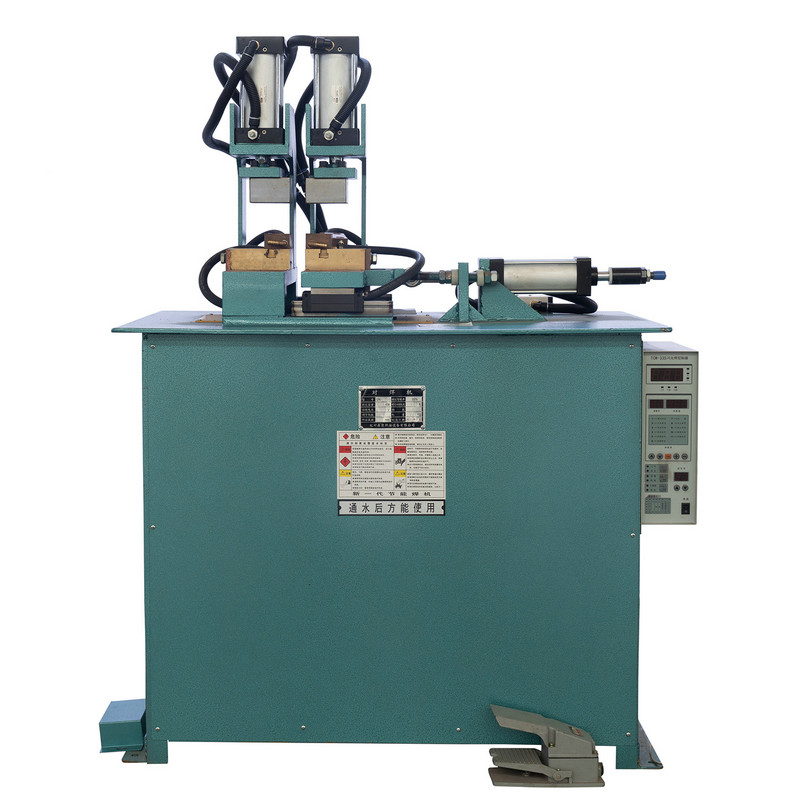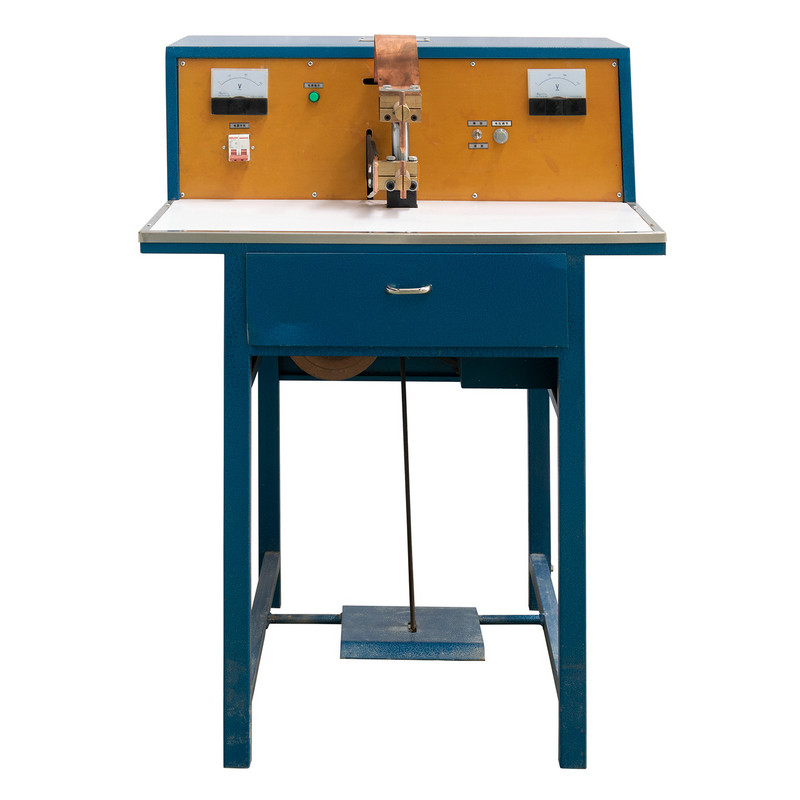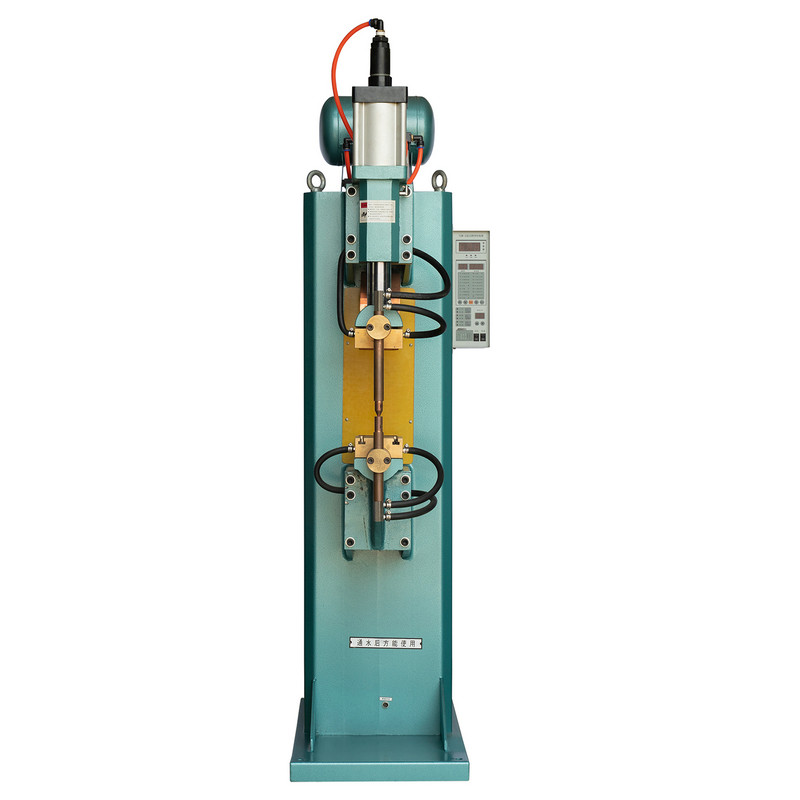The foot-operated hand operated butt welding machine is a widely used tool in metal fabrication, offering precision and control for joining metal workpieces. However, like any mechanical equipment, it can encounter operational issues that affect performance and weld quality. Understanding these common problems and their solutions ensures smooth operation, reduces downtime, and extends the machine’ s lifespan.
Common Issues and Solutions
1. Poor Weld Quality and Inconsistent Joints
One of the most frequent complaints with foot-operated hand operated butt welding machines is inconsistent weld quality. This may manifest as weak joints, uneven fusion, or excessive spatter. The primary causes include improper electrode alignment, insufficient pressure, or contaminated workpieces.
To resolve this, operators should first check that the electrodes are correctly aligned and in good condition. Worn or misaligned electrodes should be replaced or adjusted. Additionally, the pressure applied by the foot pedal must be consistent—too little pressure results in poor fusion, while excessive force can deform the metal. Cleaning the workpiece surfaces before welding removes oxides and contaminants that could interfere with the weld.
2. Machine Fails to Generate Sufficient Heat
If the foot-operated hand operated butt welding machine does not produce enough heat, the weld will not form properly. This issue often stems from electrical problems, such as loose connections, faulty transformers, or worn-out cables. Over time, resistance in the circuit increases, reducing current flow.
Inspecting the wiring and tightening any loose connections is the first step. If the problem persists, the transformer or secondary cables may need replacement. Regular maintenance, including checking the machine’s electrical components, prevents such failures.
3. Excessive Sparking During Operation
While some sparking is normal, excessive sparks indicate underlying issues such as dirty electrodes, incorrect pressure settings, or poor workpiece contact. Prolonged sparking can damage the electrodes and reduce weld quality.
Cleaning the electrodes with a wire brush or emery cloth removes built-up debris. Adjusting the foot pedal pressure ensures proper contact between the workpieces. If sparking continues, the electrode faces may need resurfacing or replacement.
4. Foot Pedal Mechanism Malfunctions
Since the foot-operated hand operated butt welding machine relies on pedal pressure for operation, any issues with the pedal mechanism can disrupt welding. Common problems include sticking pedals, broken springs, or hydraulic leaks (if applicable).
Lubricating the pedal linkage and checking for mechanical obstructions can restore smooth operation. If the pedal feels loose or unresponsive, inspecting the spring tension or hydraulic system (if equipped) is necessary. Replacing worn components ensures consistent pressure application.
5. Overheating of the Welding Machine
Continuous use of the foot-operated hand operated butt welding machine can lead to overheating, especially if cooling systems are inadequate or airflow is restricted. Overheating reduces efficiency and may damage internal components.
Ensuring proper ventilation around the machine prevents overheating. If the machine has a cooling fan, checking its functionality is crucial. Operators should also follow recommended duty cycles, allowing the machine to cool between prolonged welding sessions.
6. Electrode Wear and Degradation
Electrodes degrade over time due to heat and mechanical stress. Signs of wear include pitting, deformation, and reduced conductivity. Worn electrodes lead to poor current transfer and inconsistent welds.
Regular inspection and dressing (reshaping) of electrodes prolong their lifespan. When electrodes become too worn, replacement is necessary. Using high-quality, properly sized electrodes for the workpiece material minimizes premature wear.
7. Misalignment of Workpieces
Proper alignment is critical for strong butt welds. If the workpieces are not held firmly or are misaligned, the weld will be weak or uneven. This issue often occurs due to improper clamping or operator error.
Ensuring that the clamping mechanism is secure and adjusted correctly prevents misalignment. Some foot-operated hand operated butt welding machines have alignment guides—operators should use them to position workpieces accurately before welding.
8. Electrical Interference and Power Fluctuations
Voltage fluctuations or electrical interference can disrupt the welding process, leading to inconsistent performance. This is particularly common in facilities with unstable power supplies or shared electrical circuits.
Using a voltage stabilizer or dedicated power line for the welding machine helps maintain consistent current. If interference persists, consulting an electrician to assess the workshop’s electrical setup may be necessary.
Preventive Maintenance for Long-Term Reliability
To minimize operational issues, regular maintenance of the foot-operated hand operated butt welding machine is essential. Key maintenance tasks include:
- Cleaning and inspecting electrodes – Remove debris and check for wear.
- Checking electrical connections – Tighten loose wires and replace damaged cables.
- Lubricating moving parts – Ensure smooth operation of the foot pedal and clamps.
- Verifying pressure settings – Adjust as needed for different material thicknesses.
- Monitoring cooling systems – Prevent overheating by ensuring proper ventilation.
A well-maintained machine operates efficiently, reduces repair costs, and produces high-quality welds consistently.
The foot-operated hand operated butt welding machine is a reliable tool, but like any equipment, it can develop issues affecting performance. Common problems include poor weld quality, insufficient heat, excessive sparking, pedal malfunctions, overheating, electrode wear, workpiece misalignment, and electrical interference. By understanding these issues and applying the appropriate fixes, operators can maintain optimal functionality. Regular preventive maintenance further enhances machine longevity and weld consistency. Addressing problems promptly ensures smooth operations and high-quality welding output.









